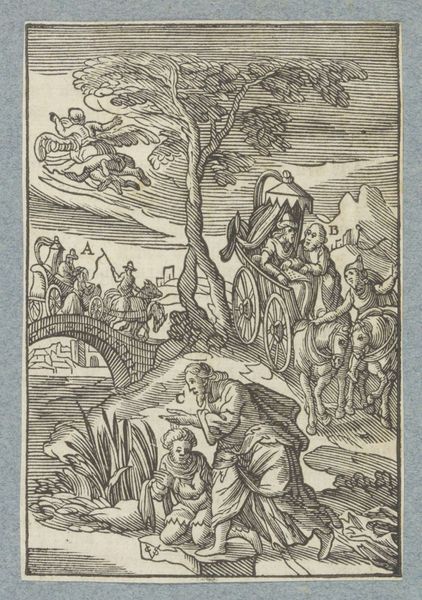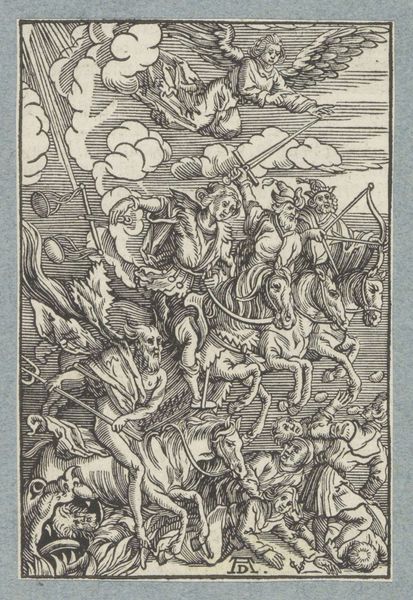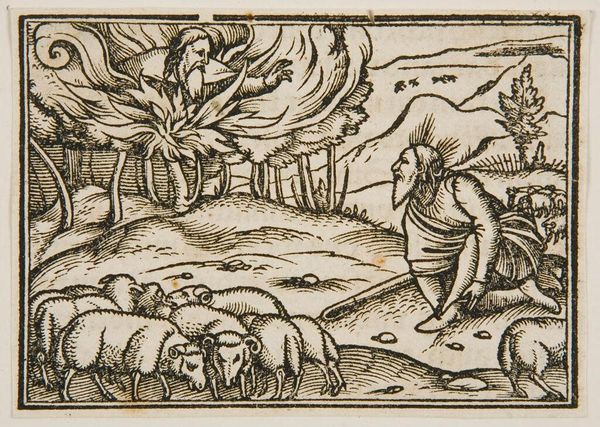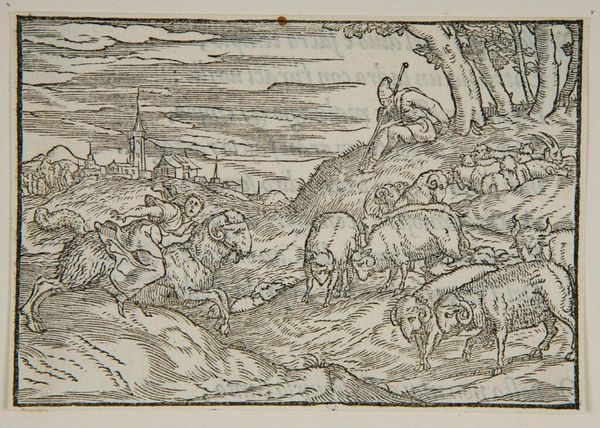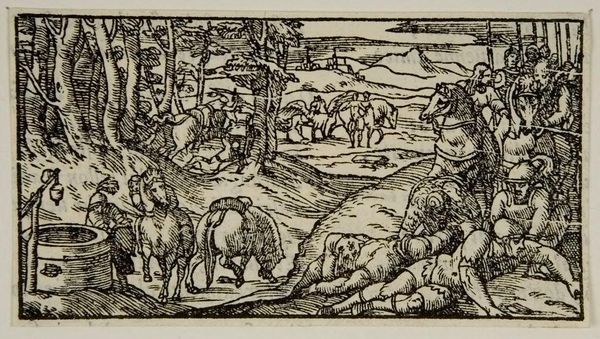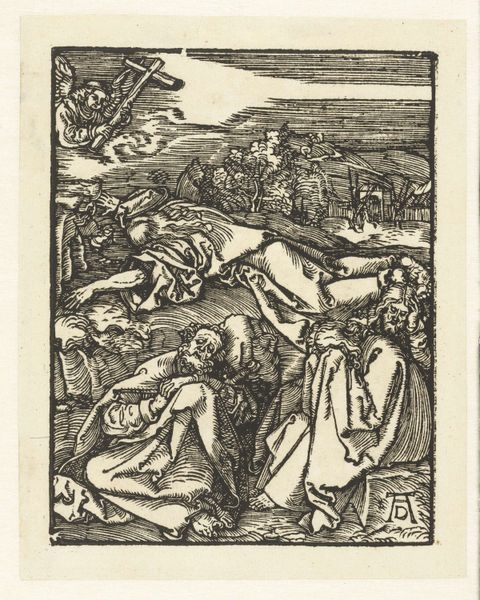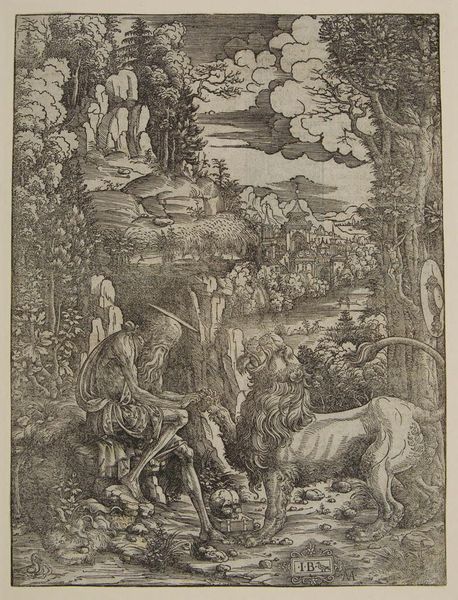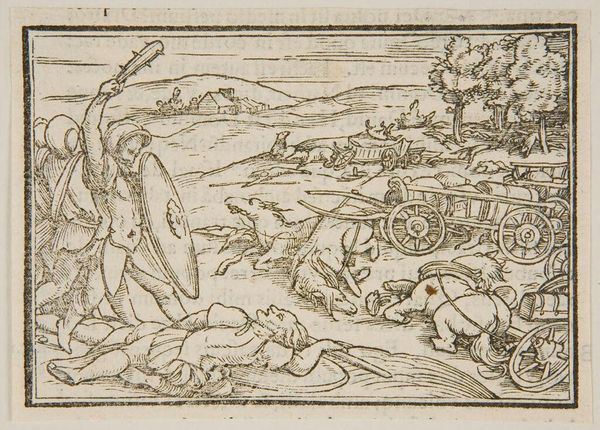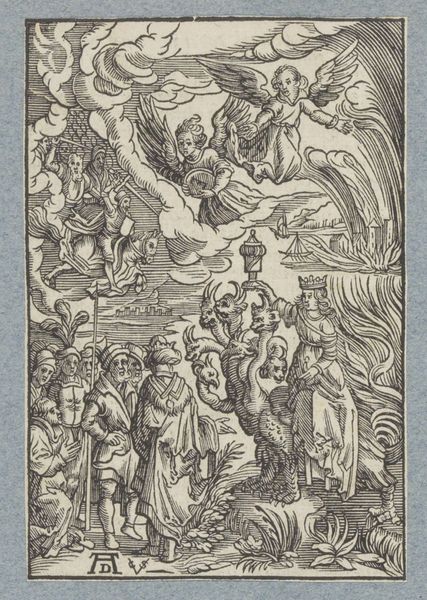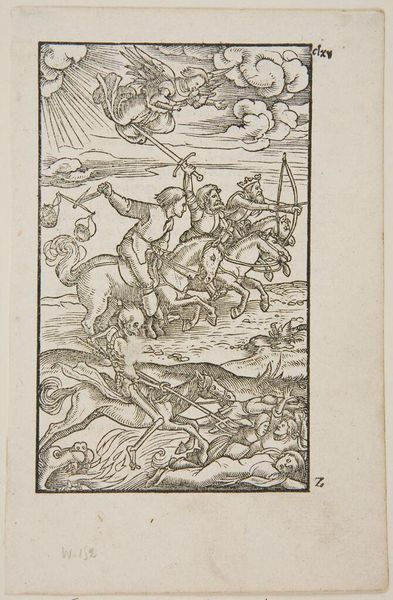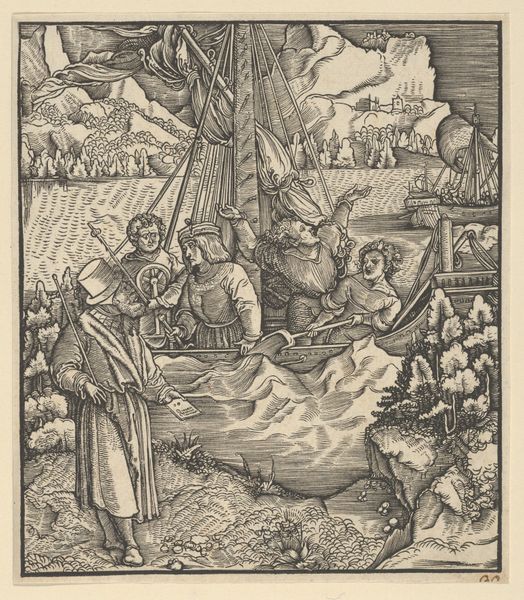
print, woodcut
#
medieval
#
narrative-art
# print
#
landscape
#
figuration
#
woodcut
#
line
#
history-painting
#
northern-renaissance
Dimensions: height 65 mm, width 50 mm
Copyright: Rijks Museum: Open Domain
Curator: Before us is Hans Holbein the Younger’s woodcut, "The Ploughman," also known as "Boer en de Dood" from between 1524 and 1538. Editor: It strikes me immediately as both stark and vital. The heavy lines carving out this rural scene – death seems almost a part of the process, certainly present. Curator: Indeed. Holbein created a whole "Dance of Death" series, and this print powerfully reflects the widespread anxieties of the 16th century – religious upheaval, plagues, social unrest. It engages in the memento mori tradition so prevalent in the Northern Renaissance. Editor: I see how the symbolism of the plowman connects deeply to life's cycles – sowing and reaping, birth and death. The figure of death is fascinating; he’s driving the oxen and wielding a whip. It’s not just about death arriving; it's actively involved in labor. Curator: The "Dance of Death" was a popular theme, reminding people of death's inescapable presence regardless of status. Holbein’s work broke from traditional depictions by placing death within scenes of everyday life rather than some allegorical stage. It certainly reinforced social norms but equally acknowledged the disruptions. Editor: Observe how Holbein uses very simple shapes, to remind that everyone dies, no matter your origins, death always finds its way, notice the town in the background, representing the world we inhabit. How the dark figure leads to this image is central, the farmer has no control over its destiny. Curator: Holbein worked in a period when printmaking was rapidly developing. These affordable prints made art accessible to a broader public, spreading messages like this widely, influencing opinions and social conscience. The imagery reinforced both fear and piety. Editor: Looking at it through the lens of our time, this woodcut resonates with an ongoing human fascination with mortality. Even with technological advancements, the anxiety about death lingers. Perhaps its continual presence in art, even today, functions as a method for trying to gain understanding or simply cope with our mortality. Curator: It certainly shows the powerful link between art and society. Thank you for illuminating the symbolic context, offering fresh ways to view and connect with this piece. Editor: A pleasure. It's always striking how much these historical works can continue to converse with our current cultural consciousness.
Comments
No comments
Be the first to comment and join the conversation on the ultimate creative platform.

